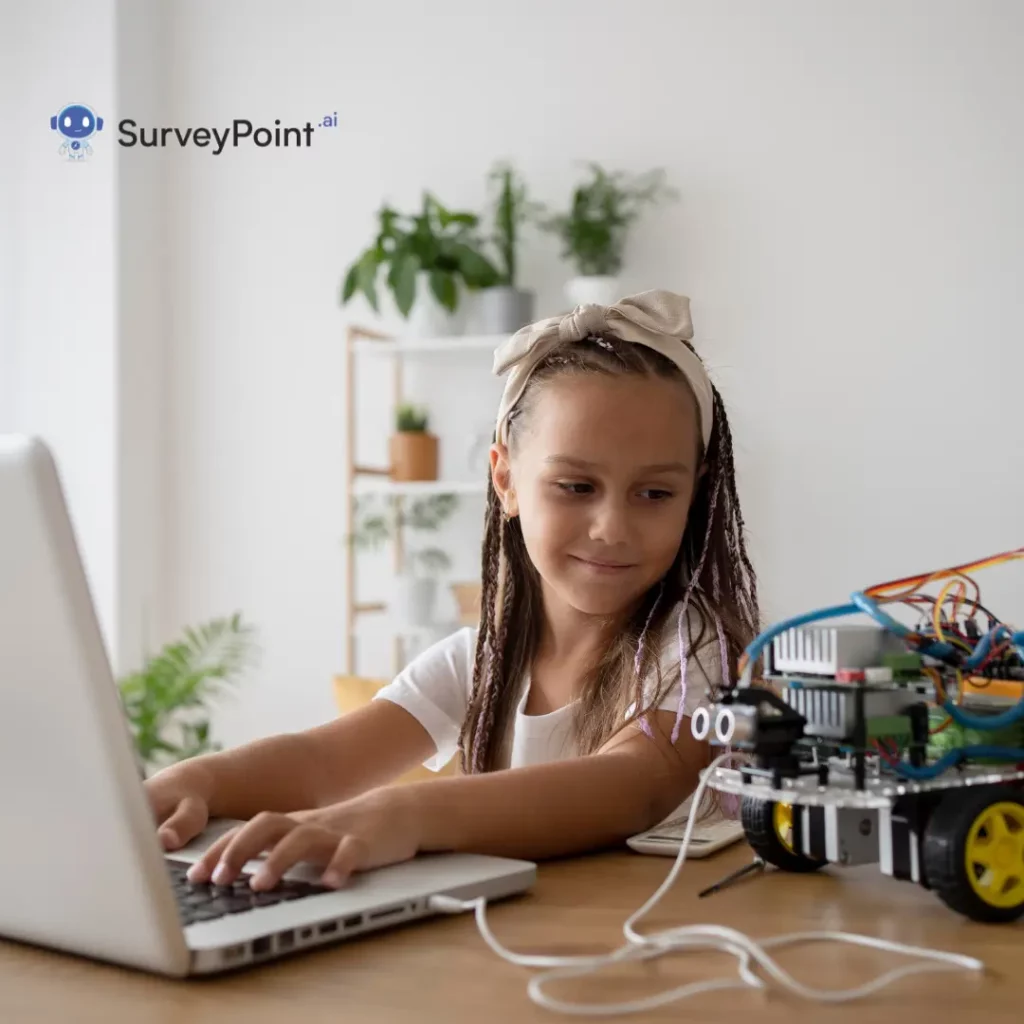
In an era where technology is evolving at an unprecedented pace, introducing young minds to the wonders of machine learning has become not just a choice but a necessity. The fusion of education and innovation has given rise to a fascinating realm where young learners can grasp the fundamentals of artificial intelligence through a concept known as “Machine Learning for Kids.”
Machine learning, often considered a complex domain reserved for experts, is breaking barriers to empower the youngest members of our society. The importance of integrating machine learning into children’s education lies in its ability to foster critical thinking, problem-solving skills, and a deep understanding of how technology shapes the world around us.
This blog aims to delve into the reasons why machine learning is crucial for the holistic development of children, exploring its role in enhancing cognitive abilities, nurturing creativity, and preparing the next generation for a future where innovation knows no bounds.
Understanding the Basics: What is Machine Learning?
Machine learning is a subset of artificial intelligence that enables computers to learn and improve from experience without being explicitly programmed. In simpler terms, it’s a method of teaching machines to make decisions based on patterns and data, allowing them to perform tasks without human intervention. By introducing kids to the concept of machines learning from examples and data, we lay the foundation for a future where they can harness the power of technology to solve complex problems.
Unravelling the Mystery: AI vs. Machine Learning
Before we dive into the world of machine learning, let’s clarify the distinction between AI and ML. Artificial intelligence is a broad concept encompassing machines that can perform tasks that typically require human intelligence. Machine learning, on the other hand, is a specific subset of AI that focuses on systems learning from data and improving over time. In essence, all machine learning is AI, but not all AI is machine learning. This nuanced difference sets the stage for comprehending the intricacies of these transformative technologies.
Examples of Machine Learning for Kids
1. Image Recognition Games:
Showcasing image recognition games is a fantastic way to introduce kids to ML. Games that ask children to identify and match objects or animals using visual cues help them understand how machines can recognise patterns and images through learning algorithms.
2. Chatbots for Learning:
Implementing chatbots designed for educational purposes can engage children in interactive learning experiences. These chatbots can adapt to a child’s progress, providing personalised assistance and adapting their responses based on the child’s input.
3. Predictive Text:
Explore predictive text technology by showcasing how smartphones predict the next word as kids type. This example illustrates how devices learn from users’ writing patterns to make predictions, offering a glimpse into the world of natural language processing in Machine Learning.
4. Robotics and Programming:
Introduce kids to the exciting realm of robotics, where they can learn how programming and Machine Learning come together to enable robots to perform tasks. This hands-on experience can be both educational and entertaining, fostering a love for technology.
5. Music and ML:
Highlight the use of Machine Learning in the creation of music. Showcase applications that compose music or generate melodies based on patterns and preferences. This example not only introduces the creative side of ML but also demonstrates its potential across various domains.
Why Learning ML is Essential for Kids
Understanding the importance of Machine Learning in a child’s education involves recognizing the skills and benefits it imparts:
1. Critical Thinking:
ML encourages kids to think critically as they analyse data, identify patterns, and make decisions. This skill is crucial for problem-solving in various aspects of life.
2. Adaptability:
In a rapidly changing world, the ability to adapt is invaluable. Machine Learning introduces kids to the concept of systems evolving and adapting based on new information, fostering a mindset of continuous learning.
3. Future Workforce Preparedness:
As technology becomes increasingly integrated into all aspects of society, having a foundational understanding of machine learning prepares kids for the future job market, where these skills will be highly sought after.
4. Computational Thinking:
ML introduces computational thinking, helping kids break down complex problems into smaller, more manageable parts. This approach promotes a structured problem-solving mindset that can be applied in various fields.
5. Ethical Considerations:
Learning about machine learning also involves discussions about ethics and responsible technology use. This awareness instills a sense of responsibility and digital citizenship in kids from an early age.
Nurturing the Seed: Encouraging Your Child to Learn Machine Learning
1. Interactive Learning Platforms:
Explore kid-friendly ML learning platforms and apps that make the process enjoyable. Platforms like Scratch and AI for Kids offer interactive and engaging experiences suitable for different age groups.
2. Family Coding Sessions:
Make learning ML a family affair by engaging in coding sessions together. Platforms like Code.org and Khan Academy offer beginner-friendly lessons in coding and Machine Learning concepts.
3. Real-world Applications:
Connect ML to real-world applications by discussing how it impacts daily life. From personalized recommendations on streaming platforms to voice-activated assistants, help your child see the tangible outcomes of Machine Learning.
4. Supportive Learning Environment:
Create a supportive environment where mistakes are viewed as opportunities to learn. Encourage curiosity and experimentation, fostering a positive attitude towards problem-solving and exploration.
5. Showcasing Role Models:
Introduce your child to successful individuals who have used Machine Learning in innovative ways. This can inspire and provide tangible examples of how ML can be a powerful tool for positive change.
Conclusion
In conclusion, machine learning for kids is not just about preparing them for a tech-driven future; it’s about empowering them to shape that future. By providing a solid foundation in ML, we equip our children with the tools to navigate an evolving world, fostering creativity, critical thinking, and adaptability. As parents and educators, our role is to guide, support, and encourage their exploration of this exciting field, ensuring they become not just consumers but creators of technology. So, let’s embark on this journey together, unravelling the mysteries of machine learning and opening doors to endless possibilities for our kids.




